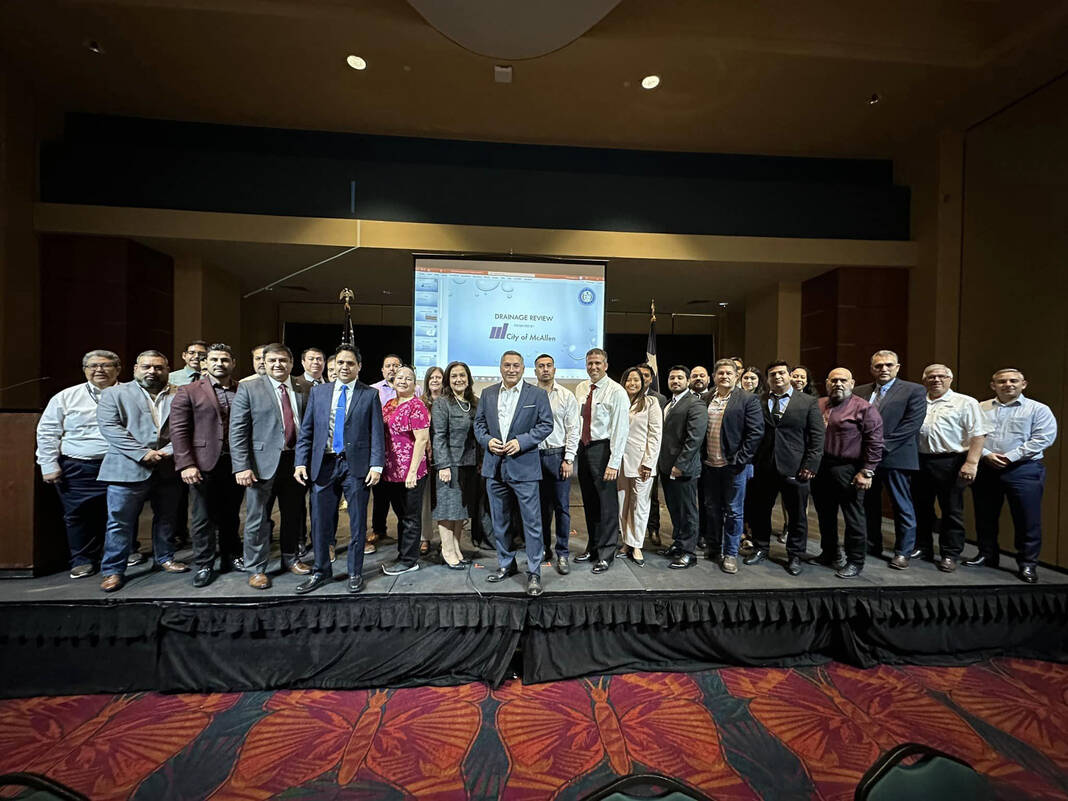McALLEN — A group of Hidalgo County cities hoping to bring consistency in their drainage systems is getting bigger, and they’re hoping to recruit more into the fold.
City leaders from across the county assembled Thursday in their continued efforts to regionalize drainage plans, hoping that having everyone on the same page will minimize blind spots in drainage systems.
The cities of McAllen, Edinburg, Mission and Pharr had created the Municipal Drainage Committee about a year ago aiming to establish uniformity in the way they enforce rules and regulations for their drainage infrastructure.
On Thursday, they were also joined by representatives from the cities of Alamo, Palmview, Mercedes, Weslaco, San Juan, Progreso, Granjeno, Hidalgo and Donna.
“Today was a lot of progress because we finally got some of the smaller municipalities to come in,” said McAllen Mayor Javier Villalobos, though he added there were many other cities they hoped to enlist.
“It’s very important that they start getting involved,” Villalobos said. “If it’s working for us, I can almost assure you it’s going to work for them.”
During their meeting, City Engineer Eduardo Mendoza delivered a presentation on the drainage policy that McAllen, Mission, Edinburg and Pharr have already adopted.
“What the policy will do is it sets minimum standards for your city and that guides the engineers and the developers,” Mendoza said.
He also reviewed a master drainage study the city of McAllen is currently undertaking and available funding sources.
In the city of Mercedes, City Commissioner Ruben J. Saldana said they’ve already taken a big-picture approach within the city itself by expanding the drainage systems within the city, collaborating with the county, and completing their own master drainage plan.
“It’s a citywide drainage issue so it’s not just us digging here and digging there,” Saldana said. “There’s a method to it.”
He said that approach could be replicated throughout other cities and warned that not having a larger plan could create choke points within the systems.
“This whole idea-sharing thing is a good thing because all these areas get coordinated — everybody adopts similar best management practices for this and similar types of projects — I think it will really help mitigate issues that happen,” Saldana said.
“The entire Valley is one area in terms of how it’s laid out, how the slopes are, and how the waterways run and all of that,” Saldana said, “and so while we are confined to our city limits, Mother Nature does not recognize those and so we’ve got to be able to do things together.”
As part of the joint efforts between the cities, Villalobos emphasized to city leaders the importance of being careful when it came to granting variances to developers.
“If somebody’s subdividing, they need to develop and they need to put drainage, they need to put their pipes, they need to put everything,” Villalobos said. “If, for example, the city says ‘OK, we’ll give you a variance, you don’t have to do it,’ well whenever the area develops, somebody’s going to have to do it and it’s going to end up being the rest of the taxpayers and I don’t think that’s fair.”
But what Villalobos kept returning to was the call to all cities in the region to join the collaboration.
“We need you all to join, we need you to all work together with us — with the cities of Pharr, Edinburg, Mission and McAllen — and be part of that,” Villalobos said. “It’s so important and we’re going to keep on pushing until we have the drainage system that our community deserves.”




